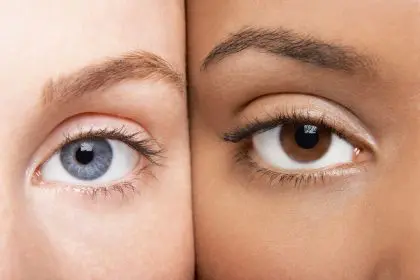It starts with a slight tingle. Then a prickle. Soon you’re frantically scratching, but when you look down at your skin, there’s… nothing there. No redness, no bumps, no rash—just normal-looking skin that feels like it’s crawling with invisible ants. If this strange phenomenon sounds familiar, you’re not alone. Millions of people experience mysterious itching with no visible cause, leaving them frustrated, uncomfortable, and often dismissed by healthcare providers who can’t see any physical problem. But science is finally uncovering the neurological mysteries behind this phantom itching, and the answers might surprise you.
When your nerves cry wolf
Itching seems simple on the surface. Something irritates your skin, nerves send an “itch” signal to your brain, you scratch, problem solved. But your body’s itch detection system is surprisingly complex and easily confused.
The sensation of itching is primarily transmitted through specialized nerve fibers called C-fibers. These thin, unmyelinated nerves carry not just itch signals but also sensations of pain, temperature, and touch. Because these fibers handle multiple types of sensory information, signals can sometimes get crossed or misinterpreted.
Your nervous system can essentially “cry wolf,” generating itch signals when there’s no actual threat to your skin. This neurological confusion explains why you can feel intensely itchy without any visible skin changes. Your brain is receiving legitimate itch signals, but they’re not being triggered by actual irritants on your skin.
Think of it like phantom phone vibrations, that odd sensation where you’d swear your phone is buzzing in your pocket, but when you check, there’s no notification. Your nerves are equally capable of creating convincing sensory illusions, especially when it comes to itching.
The brain-skin connection
Your skin and brain developed from the same embryonic tissue during fetal development, creating a uniquely intimate relationship between these two organs. This connection, often called the neuro-immuno-cutaneous system, means your skin reacts to your thoughts and emotions, not just to physical stimuli.
When you’re stressed, anxious, or even bored, your brain can activate pathways that trigger itch sensations. This explains why psychological stress so often manifests as skin issues, from mild itching to serious flare-ups of conditions like eczema and psoriasis.
The neurotransmitters involved in mood regulation, including serotonin and dopamine, also play important roles in itch perception. When these brain chemicals fluctuate during periods of stress or depression, they can inadvertently amp up your itch sensitivity, making you feel itchy even in the absence of any skin irritation.
This brain-skin pathway works both ways. Chronic itching can trigger anxiety and depression, creating a vicious cycle where psychological distress causes itching, which causes more distress, which causes more itching. Breaking this cycle often requires addressing both the physical sensations and the psychological components.
Hidden culprits in your bloodstream
Sometimes the cause of mysterious itching isn’t on your skin or in your nerves but circulating through your bloodstream. Various compounds in your blood can trigger itching when they reach certain levels or when your body becomes particularly sensitive to them.
Histamine, the same chemical involved in allergic reactions, can cause widespread itching when elevated. But many people with chronic, unexplained itching have normal histamine levels, which is why antihistamine medications often don’t help.
Other itch-inducing substances include bile salts, which can build up with liver problems, certain inflammatory cytokines produced during immune responses, and neuropeptides like substance P that help transmit pain and itch signals.
Medications can also trigger itching without a rash, either through direct effects on nerve fibers or by causing the release of itch-inducing compounds. Common culprits include opioid pain relievers, antibiotics, blood pressure medications, and cholesterol-lowering drugs.
Hormonal fluctuations represent another common trigger, explaining why many women experience increased itching during pregnancy, menopause, or certain phases of their menstrual cycle. Thyroid imbalances, particularly hypothyroidism, are notorious for causing generalized itching without visible skin changes.
The itch that lies beneath
Sometimes the mysterious itch does have a physical cause, just not one that’s visible to the naked eye. Multiple skin conditions can cause itching before any visible signs appear.
Early eczema often begins with intense itching days or even weeks before any redness or rash develops. This “pre-clinical” phase happens because inflammatory processes are already underway at a microscopic level, irritating nerve endings before causing visible skin changes.
Dry skin, perhaps the most common cause of generalized itching, often doesn’t look particularly dry in its early stages. The skin’s moisture barrier can be compromised long before flaking or roughness becomes apparent, especially in humid environments where visual dryness is masked.
Some fungal infections, particularly those caused by yeast, can cause significant itching with minimal visible changes to the skin. Areas where skin touches skin, like under breasts or in groin folds, are particularly susceptible to these hidden fungal problems.
Microscopic parasites like scabies mites can burrow into your skin and cause intense itching before their characteristic burrow marks become visible. In the early stages, even dermatologists can miss these tiny invaders without specialized testing.
The neuropathic itch mystery
Perhaps the most fascinating category of unexplained itching comes from the nervous system itself. Neuropathic itching occurs when the problem originates not in the skin but in the nerves or central nervous system.
Damaged or malfunctioning nerves can spontaneously fire, sending itch signals to your brain when no actual itch-inducing stimulus is present. This type of itching often feels different from normal itching, described as more burning, tingling, or pins-and-needles, though many people still experience it as a conventional itch.
Neuropathic itching can result from pinched nerves, shingles infections, multiple sclerosis, diabetic neuropathy, or even brain and spinal cord conditions. What makes these cases particularly challenging is that scratching rarely provides relief and often makes the sensation worse by further irritating already sensitive nerves.
Phantom itching after healing from a skin injury falls into this category too. Just as amputees experience phantom limb sensations, your nervous system can continue sending itch signals from areas that previously had actual skin problems, creating a sort of “itch memory” that persists after the skin has healed.
Breaking the itch-scratch cycle
When you’re caught in the misery of unexplained itching, finding relief becomes all-consuming. Conventional anti-itch treatments often fail because they target skin inflammation that isn’t there. Instead, these strategies target the neurological aspects of unexplained itching:
Cold therapy works by essentially short-circuiting itch signals. Applying something cold to itchy skin activates temperature receptors that can override itch signals traveling along the same nerve pathways. Ice packs, cool compresses, or even refrigerated moisturizers can provide temporary but immediate relief.
Capsaicin, the compound that makes chili peppers hot, can paradoxically relieve certain types of neuropathic itching. When applied topically, it initially activates the same nerve fibers that transmit itch, but with continued use, it depletes the neurotransmitters these fibers use to send signals, essentially wearing out the itch pathway.
Gabapentinoids, medications originally developed for epilepsy and nerve pain, can be remarkably effective for neurological itching. These drugs modulate the way nerves transmit sensory signals, dampening overactive itch pathways in the nervous system.
Mindfulness meditation and cognitive behavioral therapy show promising results for breaking the itch-scratch cycle. By learning to observe itch sensations without automatically scratching, you can gradually desensitize your brain to these signals and reduce their perceived intensity.
When to seek medical help
While occasional unexplained itching is common, persistent or severe itching without a rash warrants medical attention. It could signal an underlying condition requiring treatment beyond simple itch relief.
Widespread itching that develops suddenly and persists for more than a few weeks should prompt a doctor visit, especially if it disrupts sleep or daily activities. Blood tests can check for liver function, kidney disease, thyroid imbalances, and other internal causes.
Itching that’s particularly intense at night might indicate certain specific conditions, including lymphoma, kidney disease, or parasitic infections, and deserves prompt evaluation.
If itching is accompanied by fatigue, weight changes, night sweats, or changes in bowel habits, these could indicate systemic issues ranging from anemia to certain cancers where itching can be an early warning sign.
Conclusion
The mystery of itching without a rash highlights the complex interplay between your skin, nervous system, and brain. Far from being “all in your head,” this phenomenon has real neurological and physiological underpinnings that are only now being fully understood.
The next time your skin crawls with that maddening itch despite looking perfectly normal, remember that the absence of visible evidence doesn’t invalidate your discomfort. Your nervous system is trying to tell you something, even if it’s occasionally speaking in riddles.
With advances in our understanding of neuroimmunology and sensory processing, treatments for unexplained itching are improving. The relief you seek might come not from treating your skin, but from calming the complex neural networks that create the sensation of itch in the first place.














